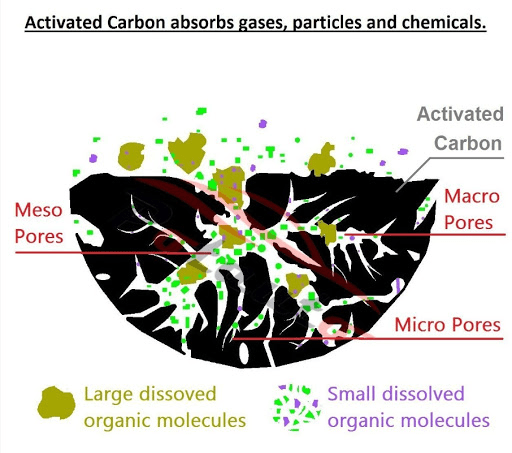Carbon filters in water dispensers
Most if not all suppliers of Water Dispensers are going on about activated carbon, carbon filtration and all that stuff. Today, we are here to learn more on what carbon really does to the water we drink.
In truth, using carbon as a filtration tool has been around for several hundred years and is considered one of the oldest methods of water purification. Evidence has shown that ancient Egyptians used carbon filtration for medicine and also as a purifying agent. They stored water in charcoal and it made their water taste fresher and better! Water was stored in Phoenician trading ships in charred wooden barrels. This preserved and extended the use of potable water on long sea voyages. Even Sanskrit texts from 2000 B.C have mentioned filtering water through charcoal!
So how does carbon help? What does it actually do? Taking the image as reference, carbon adsorbs (Yes, adsorbs in an actual word) organic molecules and chlorine. Adsorption occurs when one material attaches itself to another by chemical attraction. This removes and cleans up any of these unwanted substances and chemicals that might be present in water. It continues to do so until it gets clogged up (all binding sites have been used up). The carbon then loses its purpose and will have to be replaced.
In short, carbon has been so effective as a purification agent that it is used everywhere. If, for some reason, the filters that you’re currently using do not contain carbon, you’re missing the entire point of filtration. Whether it’s organics, herbicides, pesticides or excess chlorine, the standard treatment is activated carbon.
Not convinced? In World War 1, American soldiers used gas masks that contained activated carbon to protect themselves from poison gas. We don’t know about you, but we’re going to get ourselves some carbon in our filters when we use Water Dispensers.

Found it interesting? Why not share?
